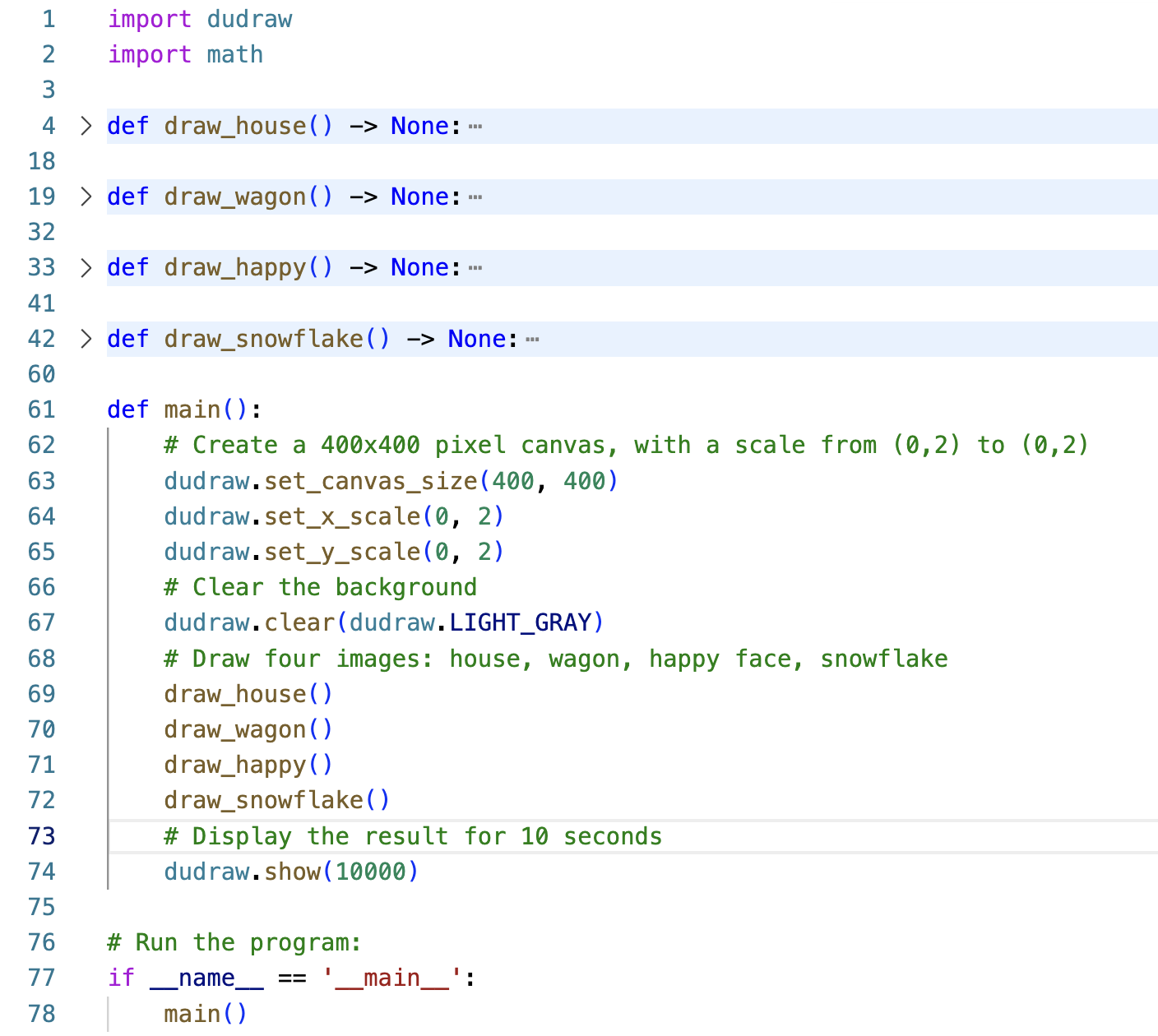User-defined functions in python
Most programming languages give you a way to separate a block of code from the main program. This is useful to
- provide organization to your program by chunking it into blocks that perform specific tasks, and
- allow you to reuse a block of code rather than repeat it.
Creating user-defined functions
This is the syntax for creating a user-defined function:
def function_name() -> None:
# Code block for the function
Key points:
- The keyword
defsignals the beginning of a function definition. - The empty pair of parentheses
()indicates that this function does not take any parameters. Function parameters are explained in a later section. - The
-> Noneindicates that the function does not return any values. Function return values are explained in a later section. - Defining functions is not completely new to you - you have defined the function
main()in every program you have written. - When you define a function, note that the code in the function is not executed. The code within the function is executed only when you call the function.
- Think of the function definition as a recipe, telling python exactly what to do when another part of the program calls the function.
- To call a function (i.e., to run its code): at the point where you want it to run, write the name of the funtion, with parentheses.
Example:
Here is the definition of a function called greet_user(). It asks the user their name, then says hello, using their name:
def greet_user() -> None:
name = input("What is your name? ")
print("Hello,", name)
In the above code, nothing is executed. The lines of code within the function only get executed when the function is called. Consider the following program that defines and uses (calls) the function greet_user():

In the above code, lines 1-3 are the definition of the greet_user() function. Those lines define what you want python to do whenever greet_user() is called. On line 6, the greet_user() function is called. So when python executes line 6, it puts main() on hold, jumps to line 1, and executes the contents of the greet_user() function. That's the moment that the user is asked for their name, and the greeting is output. After that completes, the running of the program reverts back to line 6 in main() and continues from there.
Commenting functions
In this course, we will have a standard for commenting every function. After the def line, put a block comment explaining the purpose of the function. This special block comment is called a docstring. When we learn about parameters and return values, we will add additional information into these docstrings.
Example:
def greet_user() -> None:
"""
First example of a user-defined function. Ask user for their name, then
output "Hello, ", followed by their name
"""
name = input("What is your name? ")
print("Hello,", name)
Putting it all together
The following code shows a program that defines and uses several functions. Each of these functions defines how to draw a part of the final image. The definition of each function has been collapsed - you can't see the contents. This is actually helpful, because while looking at the program from the highest level, the details are distracting. Notice that in main() we can easily see the overall task of the program from the four function calls. If the details of drawing each shape were placed into one long main() function, the higher-level organization of the program would be lost, mired in the details. This demonstrates the importance of using functions to break down code into bite-sized chunks.
| Code | Image produced |

|

|